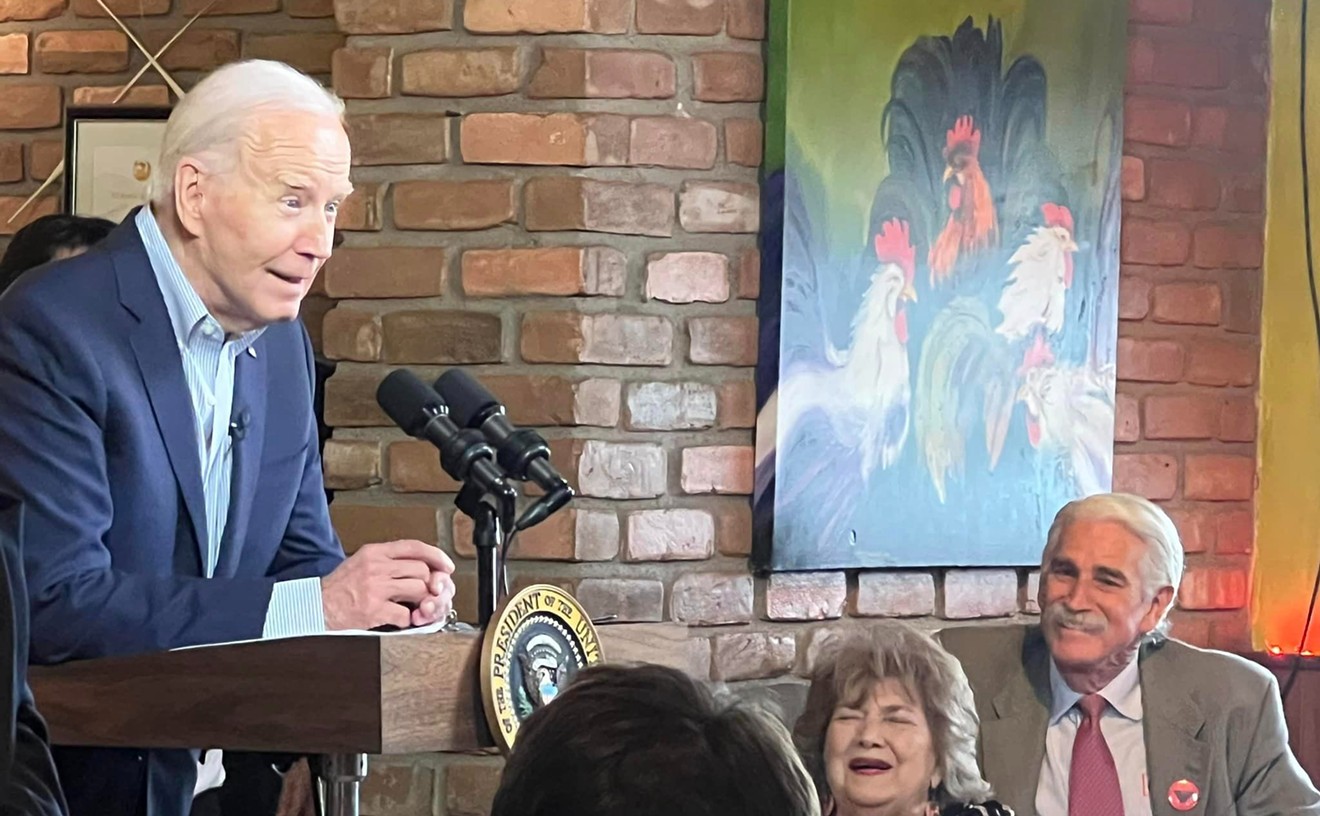Some time later, so did Calderwood's out-of-sight, out-of-mind solution to those daily squabbles--a helium-filled bed that floated to the top of the room when not in use. When bedtime rolled around, you simply grabbed the tether dangling from the bottom of the Mylar mattress and pulled it to the floor, where the weight of bedclothes--and, of course, the occupant--kept the bed in place until morning.
That was in 1989, the year that Calderwood, a family doctor in Sun City West, obtained a U.S. patent on his lighter-than-air brain child. But in spite of several newspaper stories prompted by the novelty of the invention (perhaps recalling the floating tea party in Mary Poppins, a New York Times writer dubbed the idea "Disneyesque"), Calderwood reports his buoyant bed never got off the ground.
"I never really tried to do anything with it," says Calderwood, 52, explaining that five years later, the prototype mattress is now in storage in his Peoria home. "At the time, I just didn't have the time or the money to do the research and development necessary to get it on the market."
Still, you can't keep a good idea down, which may explain why Calderwood's floating furniture currently tops a run-down of "10 Patented Inventions Whose Time Has Not Yet Come," a roster that appears in the latest edition of The Book of Lists. Other inventions on the list include a halitosis detector, a canine toilet garment that collects the animal's waste as it is produced and a device that enables people trapped in high-rise fire to survive until help arrives by breathing "fresh" air from a flexible tube inserted into the vent pipe of a toilet.
Asked about his inclusion on that list, Calderwood laughs. "Sounds like I'm in interesting company," says the doctor, who believes that his idea could also be applied to sofas, chairs and other furniture.
But The Book of Lists authors David Wallechinsky and Amy Wallace may have waited too late to call Calderwood's airborne bed "an idea whose time has not yet come." According to the doctor, one of his patients recently reported that floating beds are currently being used in small hotel rooms in Europe.
"If I hear any more rumors like that, I'll fly over to France and buy one," says Calderwood. Noting the cramped living conditions in cities such as Tokyo, the inventor expresses surprise that the Japanese didn't swipe the idea first. "Actually, I was hoping that someone would steal my idea," says Calderwood, explaining that he didn't apply for any foreign patents for exactly that reason. (A U.S. patent, like the one Calderwood received, only protects an inventor in this country.) Ideally, says Calderwood, a foreign manufacturer will steal his idea, then do the research and development necessary to get the bed on the market. Should the beds ever be imported or manufactured in America, Calderwood believes he could collect royalties.
Although Calderwood has still got more than a few bugs in his bed (the prototype mattress has to be refilled with helium every five days), he insists that his creation is more than a mere novelty. Explaining that a helium-filled mattress affords more even weight distribution than one filled with air, the doctor claims his invention has therapeutic applications and could be useful in treating burn victims or in helping to avoid bedsores in nursing-home patients.
In spite of his enthusiasm over his multifaceted invention, Calderwood concedes that his brainstorm does have its limitations. "Could this idea be applied to lawn furniture? No, I really don't think so.










